INS Tarangini, a tall three-master barque, was commissioned in 1997 as a sail training ship for the Indian Navy. With a proud history of being the first-ever Indian Naval Ship to circumnavigate, this ship toured the seven seas in 2003-04, with the theme “Building Bridges of Friendship across the Oceans”. Apart from this, INS Tarangini has participated in 13 expeditions, sailing over 1,88,000 nautical miles, accounting for a total of 2,100 days at sea. Over the years, the sail training ship has called at 74 ports in 39 countries.
Commander Sugunakar (Retd.) is a retired Indian Navy officer and a marine engineer with over 21 years of commissioned service. Hailing from Visakhapatnam, he is an alumnus of Sainik School in Kourkonda and Kendriya Vidyalaya Steel Plant branch. Currently, he is the Director at Dahra Global Technologies & Consultancy Services in Doha, Qatar. He shared a detailed story, exclusively with Yo! Vizag, of his experience during the circumnavigation of the globe on INS Tarangini. During the ship’s odyssey across the seven seas, he served as an Engineer Officer, an experience he will cherish for eternity. In his words…
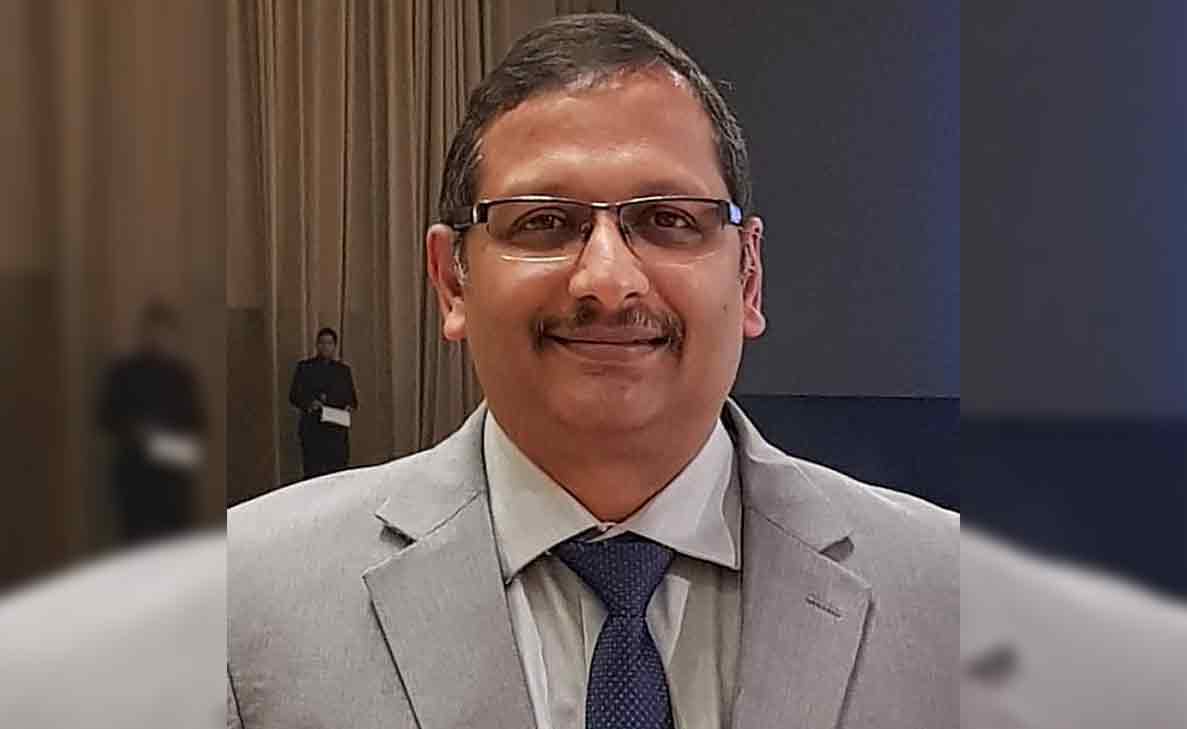
Many a seafarer have had a tale to tell of their experiences in the vast expanses of the insipid sea and water masses. Many of these tales have inspired a few more to capitulate and wonder to make that unique trip across the oceans. For I consider it a privilege to be shortlisted for a unique voyage, which incidentally surprised me, as I was slated to join INS Tarangini as her Engineer Officer at French Polynesia. But as things moved in the months prior, I joined her at Balboa, a port of call on the Pacific end in Panama.
This is a narrative of my experience on INS Tarangini, the sail training ship for seven months spent through the Pacific and Indian Oceans.
Sail through the Galapagos Islands
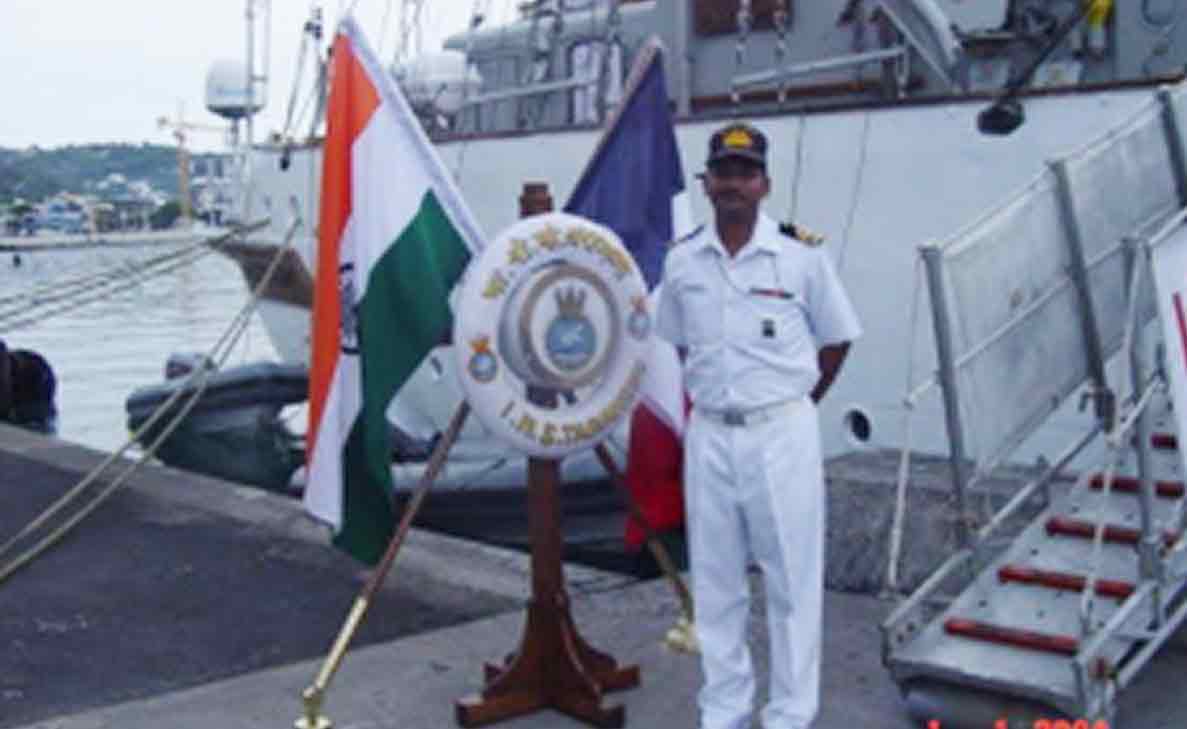
A team of 42 sailed to Panama City through Paris, New York and Miami. The move was indeed enjoyable as it was the first occasion in about 11 years of commissioned service, I had left Indian shores. Finally, the Indian Navy’s tagline – “Join the Navy & See the World” was true indeed. Having appreciated the mystic beauty of Panama in the two days spent, gaining the first sea legs en route to San Cristobal Island in the Galapagos Islands of Ecuador was made easier with following seas and fair winds. The visit to the Charles Darwin Research Station has only added to the essence of these islands.
Island hopping may have been a reason for the success of the Allied Navies in the Pacific during World War II. Our own island-hopping brought us to Isabella Island – the last island on call in the archipelago, a supply base for the pirates of yesteryears. Despite being the largest island of the archipelago, it was thinly populated. It was home to the Sierra Negra, one of the five live volcanos on the island and taking a look into its crater was a once-in-a-lifetime experience. A two-hour drive followed by a trek and climb for 40 min on horseback took us to the grandeur of its crater, telling a tale of its last eruption in 1988. The visit to these mystic islands, the first by an Indian Naval Ship has left us with the Ecuadorian warmth and the hum of the salsa etched for times to come.
Across the Pacific
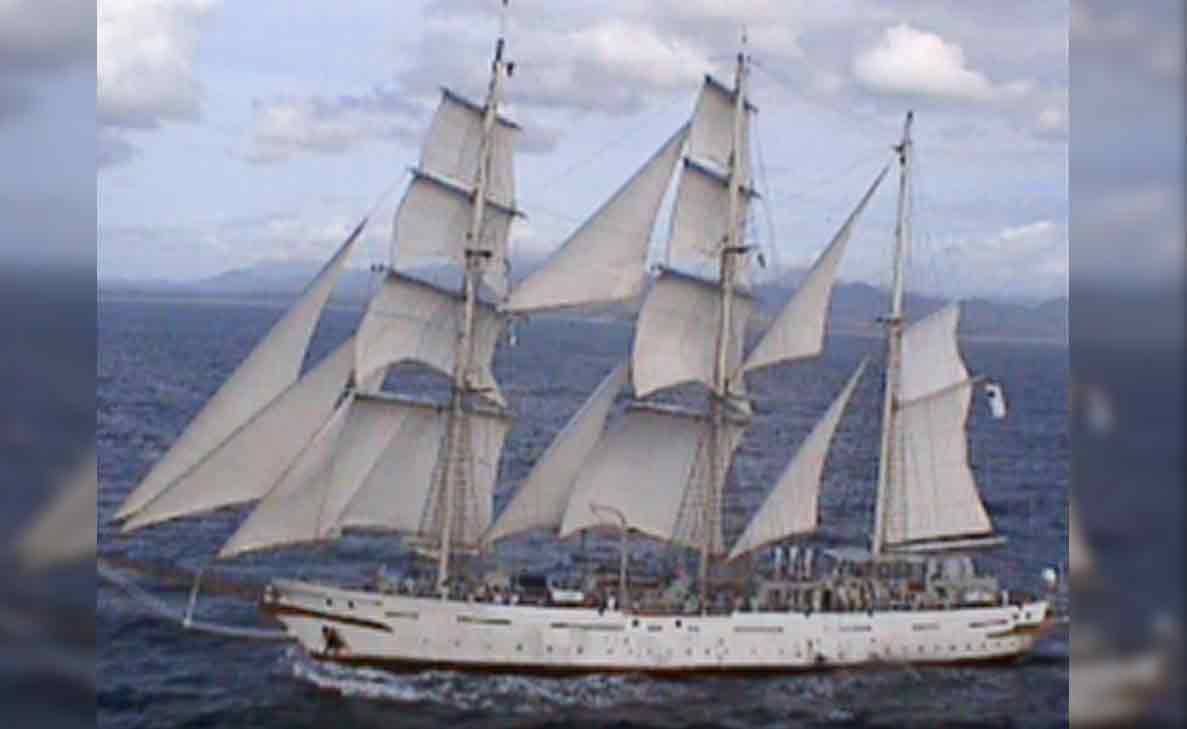
As we set a course across the Pacific some 3000 miles into the wilderness of the Pacific to our next destination – Nuku Hiva in French Polynesia to be covered in about 25 days, the essence of our human race with unbridled love and affection stayed in the sublime till date.
The first sight of land after about 24 days at sea only brought out a known war cry – Land Ahoy – Green 30. Well, it did break the mid-afternoon siesta and instilled the excitement to see land for a change! The visit was indeed memorable, discovering the rain forests, both behind the wheel and on horseback. Apart from the beauty per se, the living beauties hosted us to a dance carnival with highlights from the just concluded Festival of Arts of the Marquesas Islands. It was Christmas Eve in these parts and I was attending a mass for the first time, that too at the famous Notre Dome Cathedral in Marquesan Islands, cementing our ties of friendship with the French and the Marquesan in particular.
The Papeete fireworks
Moving to the island capital of French Polynesia – Papeete in Tahiti about 761 miles away, the expectations from Polynesia only increased. The welcome on the arrival of INS Tarangini was extraordinary with Tahitian beauties on the wharf at their traditional best in sync with the beats of the drum aiding in establishing a path to discover the Polynesian culture. Visiting the waterfalls in Vaipu Valley, swimming in the lagoons with barracuda in the company while staying calm despite their charge, an evening at the Tikki Village and welcoming 2004 with a grand spectacle of fireworks on a still December Papette night sky, will remain with me till eternity. Though this would end our stay here as we move into Micronesia – Apia in Western Samoa, a few days away, we did circumnavigate Tahiti by road and add this to our credit. More so we did move to Moorea Island by Catamaran to accomplish the same.
The Samoan Dance
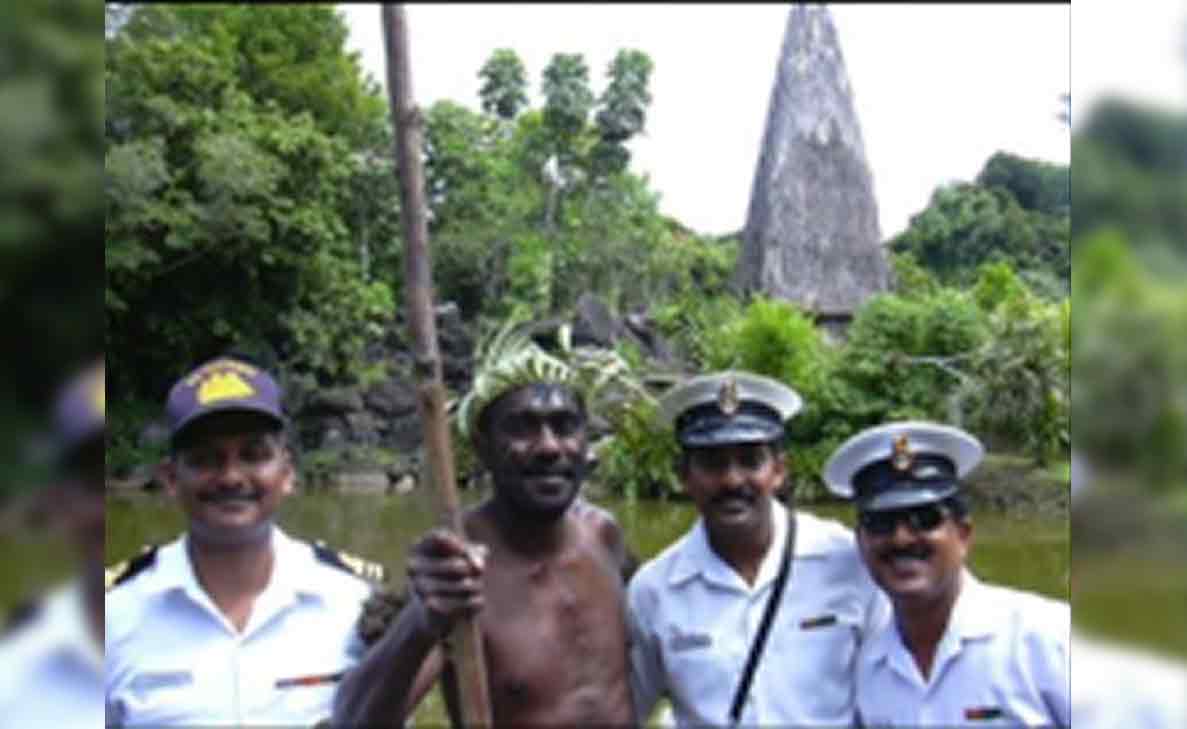
Going by the account thus far, the journey of INS Tarangini through the Pacific seems far too romantic and staying at sea on a sail training ship on a trip around the world is a fantasy. These thoughts were certainly disturbed with the typhoon HETA, passing some 650 NM away, leaving us experiencing swells of 15 feet with barometric pressure fast dipping. The devastation left by HETA was distant and noticeable as we made our maiden entry into Apia.
As the Samoans recovered and got back to work with tenacity, it only inspired me of their resilience as islanders. Support from the Pacific states was certainly on the anvil, despite the efforts required to gain sensibility. The warmth was distinct all over the island where ever we visited. It was more than profound, especially during the performance of the Samoan Dance exclusively for us, during our exploration of the island, visits to the waterfronts and the Bahai Temple. The stay was indeed memorable especially to be in attendance with the government at their traditional fair!! The ware on display was fabulous and unique, probably has added the Samoan touch to the household.
Moving on from Apia, the last known frontier in the Pacific visited by the Indian Navy was indeed very mixed. Happy that they were on the road to recovery from the ravage of a typhoon, but remotely, I felt there has to be a better way to cope and move with the vagaries of nature that repeatedly savage the Samoan way of life.
Crossing the International Date Line
As we made steady progress for the next port of call, we reached the north of Tongo Island all set to cross the International Date Line. It was here did I realize the value of losing a day of my life in a flash! At 1100 h on 17 January 2004, the appointed time we reset our clocks to read 1100 h 18 January 2004. It did not make much difference to the progress in the day as lunch was right around, but we were now 6h 30 min ahead of the IST from lagging 17h 30 min all along.
Fijian welcome
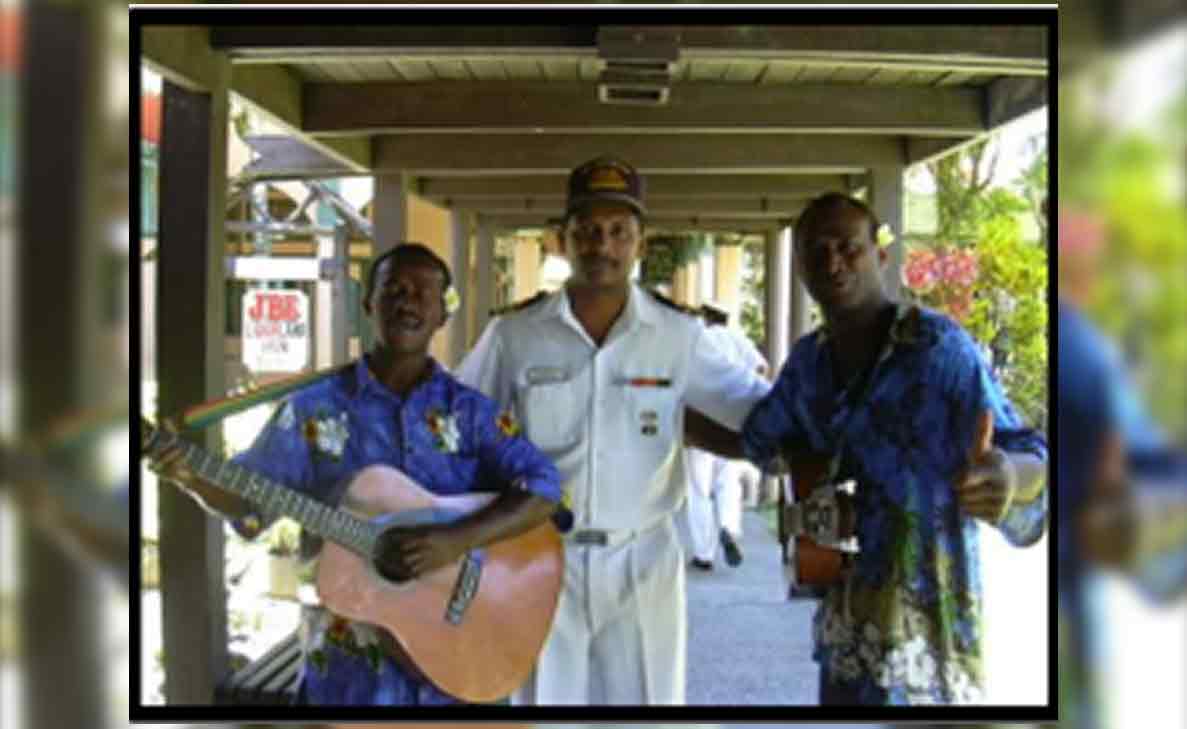
About 39% of Fiji’s population has people of Indian origin (PIO) and forms the influential think tank for the country. Having read the state of affairs prior to our arrival, I did notice an interesting facet of a very decimal representation in the police and armed force by the PIO, to say the least. The impending turmoil in the state was not evident as a large audience gathered at the wharf and beyond, giving us a clear indication of what could be expected in the days ahead. The evening was more than historical for the nation as we had three Prime Ministers– Mr Laisenia Qarase, the incumbent, Mr Mahendra Choudhary, the deposed Prime Minister- a PIO, Major General Sitiveni Rabuka along with, of course, Cmde Bainimarama, the future head of state, onboard for the reception hosted by us that evening. If I were to believe the folklore, it was the first occasion in Fijian history to have all four together at the same venue at the same time.
This set the stage for an instructive four days as this news spread leading to a stream of visitors to the ship. I cannot fathom first to explain the long queues of PIOs, beating the heat to step on an Indian Naval Ship. I do vividly recollect an old lady being helped by her grandchildren saying to me – ‘’ I may not be able to visit India ever, but as I kiss the deck here, I have felt the epitome of my motherland, I had never visited”. These words stand as a mute reminder of our own land never understood or taken seriously when there, but missed the most when you are far away.
Our visit to a Fijian village was very livid, giving us an insight into the culture that is so dear to them. The artefacts on display, food served, fire dance was done with intent to convey the sanguinity of a bright future ahead despite the present turmoil.
Team Tarangini vs Figi- a match to be remembered
You do get a chance to captain your team in the Indian Navy on many occasions and captaincy is bestowed generally by seniority to ensure the comfort zones are best left in the right place. I can hardly recollect any such occasion in the last 14 years. When the itinerary was drawn with a cricket match to be played with an Indo-Fijian team, Team Tarangini found the captain first in me and the rest of the team found its own place. It was a very honest attempt by us to put up the same spirited display by the Indian Cricket Team Down Under that summer, imbibing the prowess of both Rahul Dravid and Sachin Tendulkar of that season. As this essence was missing in our entity, the writing on the wall was very clear to me. I, the Captain of Team Tarangini, made a valiant attempt to salvage some pride and we did lose by a whisker. Contentment was evident considering we hatched a team not knowing our own strengths but still managed to put up a spirited show. I was indeed overwhelmed with pride. As we played cricket that morning, INS Tarangini sailed with a select crowd of Indo-Fijians and High Commission staff for an experience on Tarangini. After two hours at sea, I am more than sure this experience is cherished by them and stays etched in the annals of Fijian history.
The haul Down Under
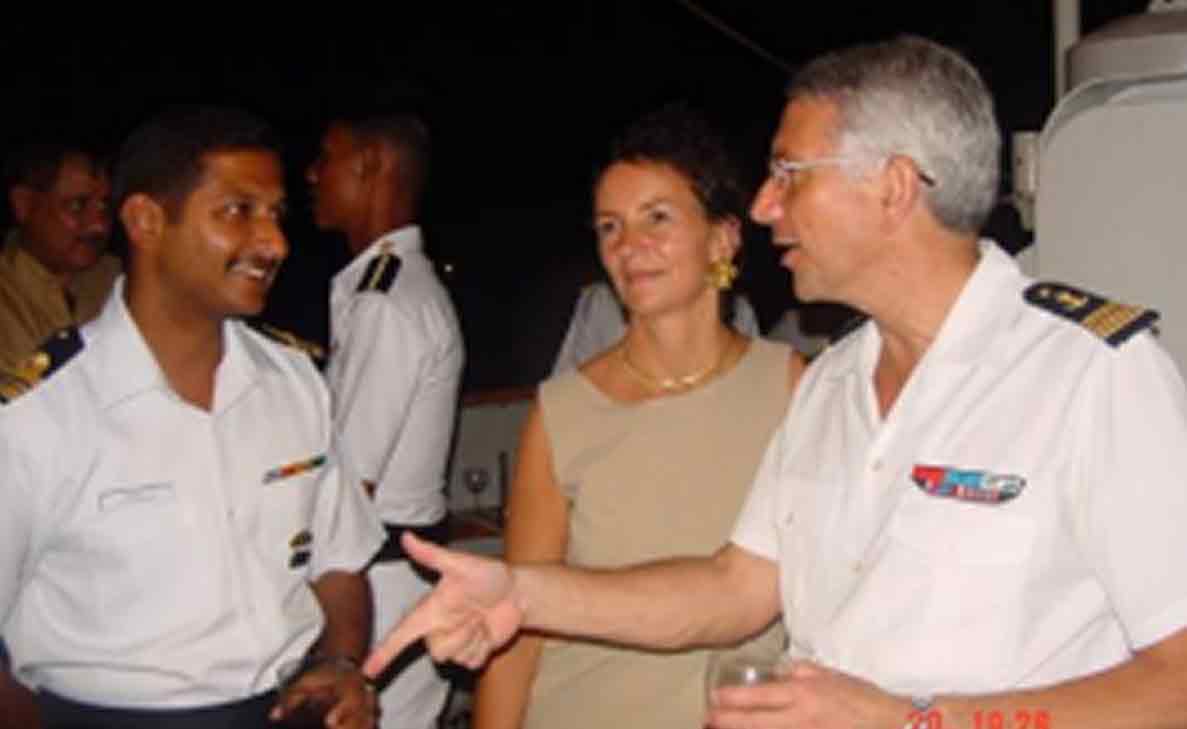
The last remaining three legs were now to follow Cairns, the next port of call. Cairns in Queensland, Australia was to be our long haul with scheduled maintenance for 10 days. It was a sojourn that everyone was eagerly awaiting. The fact that my days would anyway be longer, ensuring the work got done, loomed on me. Our moving into Aussie waters was eventful with the tropical cyclone Fritz at its full fury on the northeast coast of Australia. Staying at sea for three days prior to arrival was indeed difficult. Having weathered the storm, the entry through the Great Barrier Reef at the Grafton Passage and through to the wharf before the first light was hard as well an experience I would not be forgetting in a hurry.
The effort and quality of work with a multifaceted workforce, though small, have left an indomitable imprint, which ensured our passage incident-free. Apart from the work, my visit to the Kuwanda Rain Forest and a dip into the Reef- a world heritage site, indicated to me the efforts being made by every citizen to maintain the balance in our ecosystem. No wonder, the stringent laws of the land are implemented in letter and spirit.
The sail through the Great Barrier Reef on our passage to Darwin was more than unique in its experience. A passage by a ship is usually 12 to 20 h, going by the Speed of Advance of a sailing ship, while we took about three days. The reef pilot had piloted about 168 ships through the reef with two decades of experience at sea. He gave us a crisp exposé of the reef and narrated his experiences of the fatality of accidents that have disturbed the ecology. Finding a few grounded ships, though an eyesore, was also an interesting insight into the grim truth we had now been privy to.
In the Indian Ocean
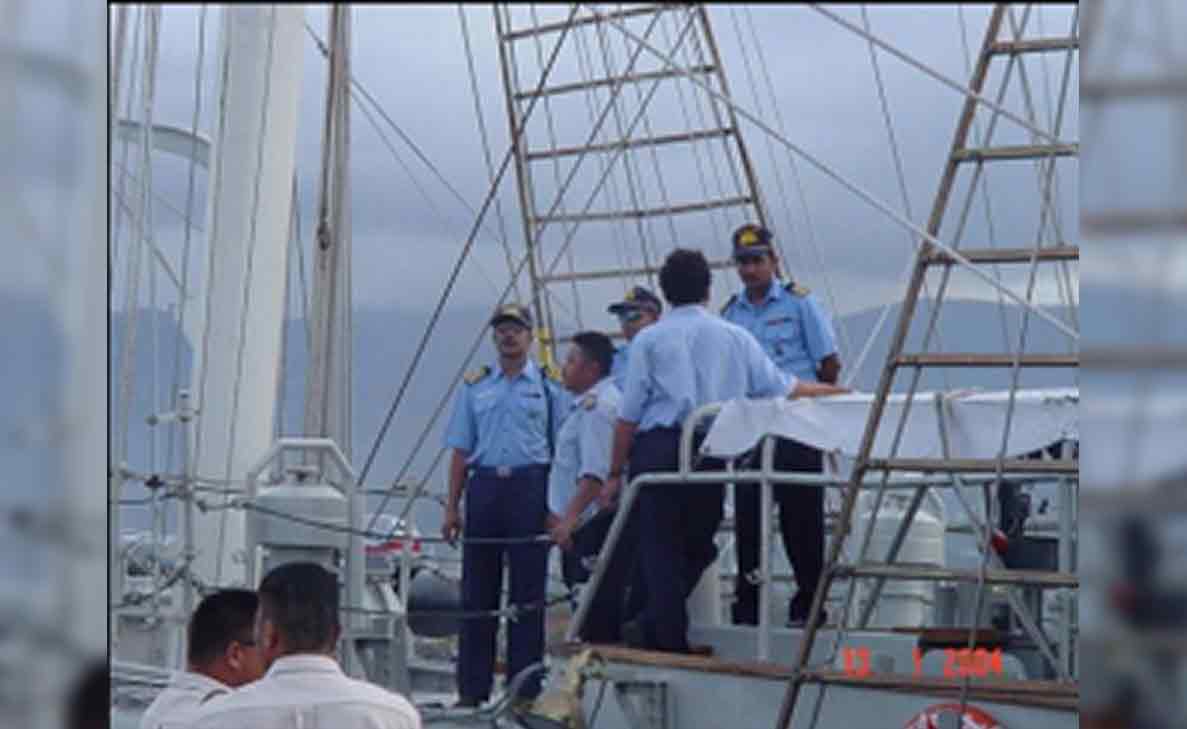
Breaking into the Torres Straits, the Gulf of Carpentaria and the Arafura Sea signalled our entry back into the Indian Ocean after about 13 months. Though INS Tarangini had seven crew members from the first leg, they are indeed the triumphant members to have been through the seven seas, a seafarer’s dream!! For me, I was the rightful claimant to be part of the crew that moved her back into the Indian Ocean. Darwin, the Capital of Northern Territories, was more mystic. The largest territory per size but was very thinly populated. Probably, with a population of 70,000, Darwin is no wonder the Capital. The stay was indeed magnificent with the warmth extended by a sizeable Indian diaspora. The cultural evening and dinner gave us that authentic Indian delicacy that was being missed since we had left Suva. Our visit to Crockodulus Park with over 200 inhabitants of both fresh and seawater crocodiles was a revelation. Many misgivings of the instincts of a croc were put to rest and known now so that when in such august company, apart from a usual pray on the lips, I can fathom and attempt to do things differently and save my skin.
Homecoming
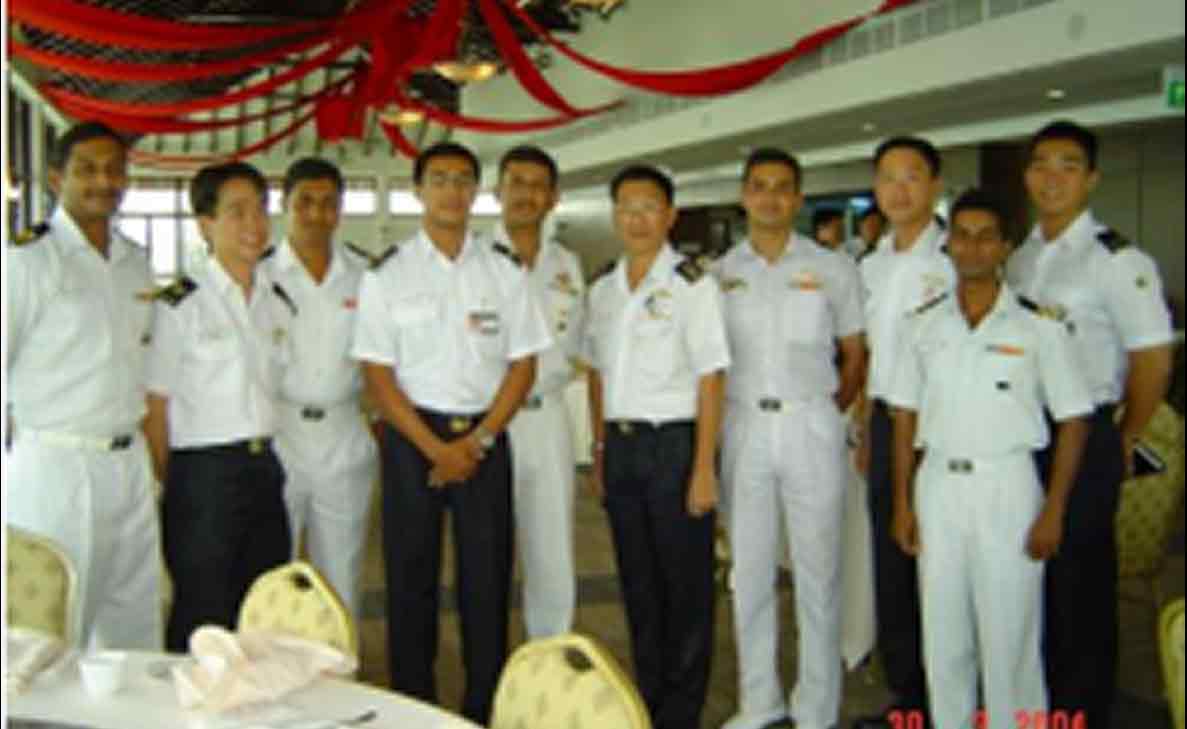
The move to Jakarta signalled our entry into the subcontinental backyard, bringing back the essence of Asia after a while. Interestingly, the difference in lifestyle and ways of life become distinct and prepared us for the impending homecoming. The experiences of Jakarta have been distinct as I grappled with machinery issues and maintenance aspects to be resolved more essentially, dealing with Indonesians in the midst of a holiday season. Getting INS Tarangini ready for sea in time and sticking to the schedule stayed firm on my mind. Eventually, as I look back now, it has only made an individual out of me with a firm belief to follow my instincts dispassionately, irrespective of the circumstances.
We moved to Singapore and Colombo on the last leg. The stay in Singapore was more spent at Sentosa Island, Water World and of course the tireless shopping into the wee hours. It was the first time I had realized that we were trimming by forward rather than aft, a feature common to all our ships as we set sail that morning of 4 April 2002. In hindsight, it indeed helped us to maintain the course, especially in the Singapore and Malacca Straits.
President Kalam on board
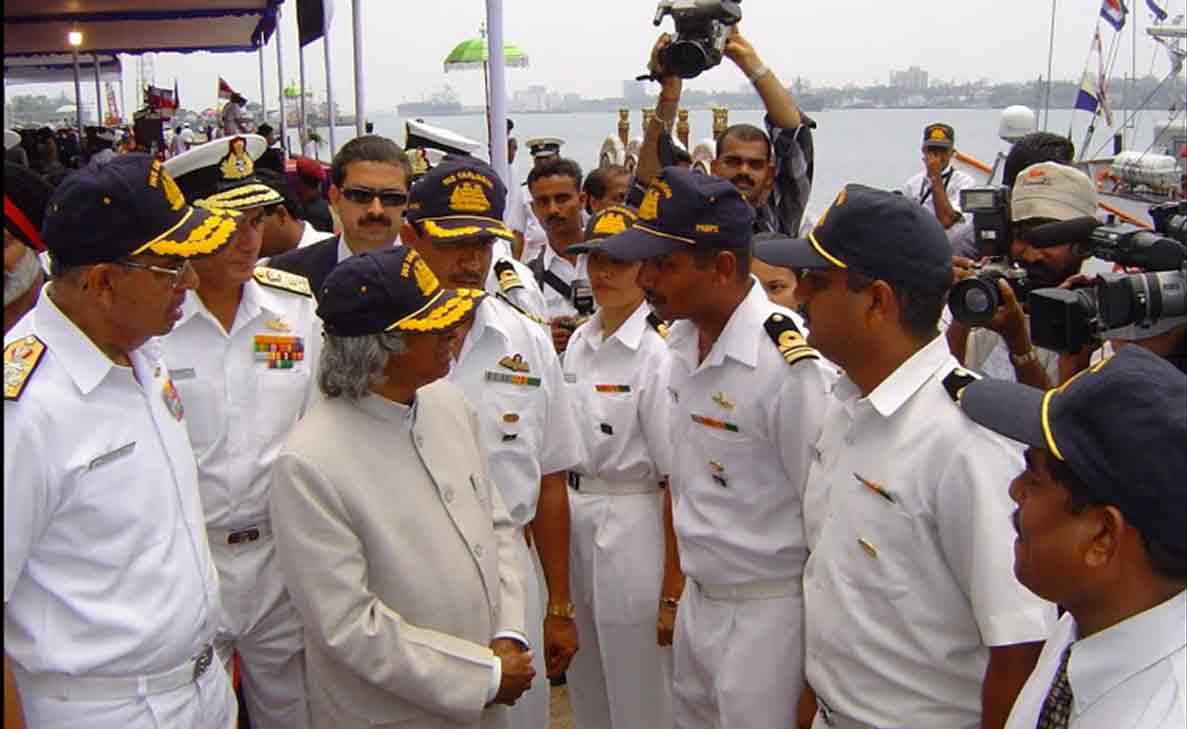
Homecoming is always eagerly awaited. To have the President of the country Dr APJ Abdul Kalam in attendance on INS Tarangini is a pleasure. But having His Excellency embark and head into Kochi along with us was indeed a privilege. The brief audience with him during his stay on board was envisioning and receiving an autographed ‘Wings of Fire’ was a befitting culmination to our voyage. The homecoming was certainly with the fanfare reminding us of our achievement. Turning into a celebrity and being sought after by the media was fun as well. Quotes of mine that went to the print media ensured I was a known figure for the day, to say the least. Importantly, having my son come to receive me was more than overwhelming. In the past seven months, the youngster has grown from a two-year-old I had last seen, to find familiarity and pick up the thread all over again. As I was sure, I will now see him grow in my presence.
19 years today, as I am reminiscent of this voyage, god willing, the calling of the sea would surmount any feeling otherwise but to feel the spray of salt on my cheeks….


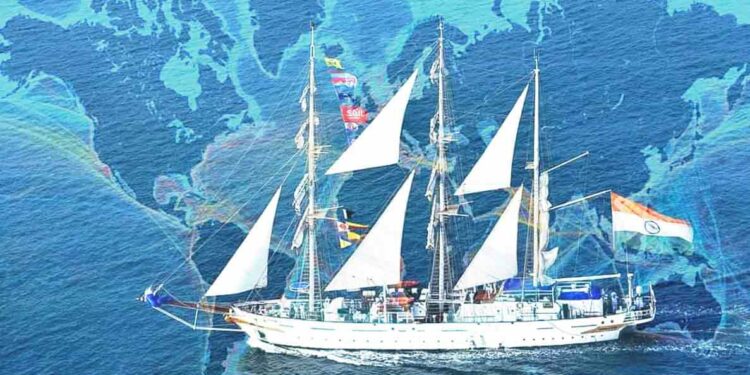







Discussion about this post